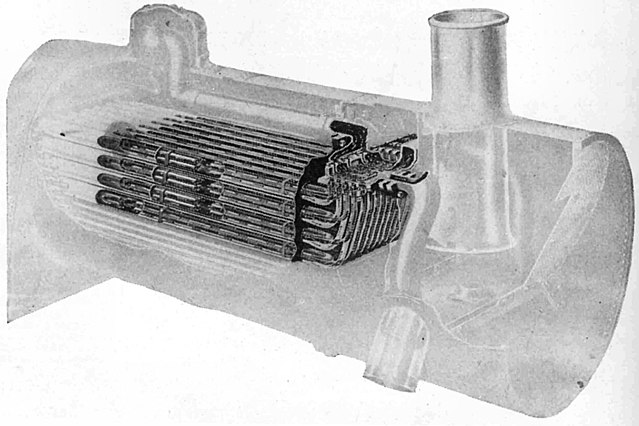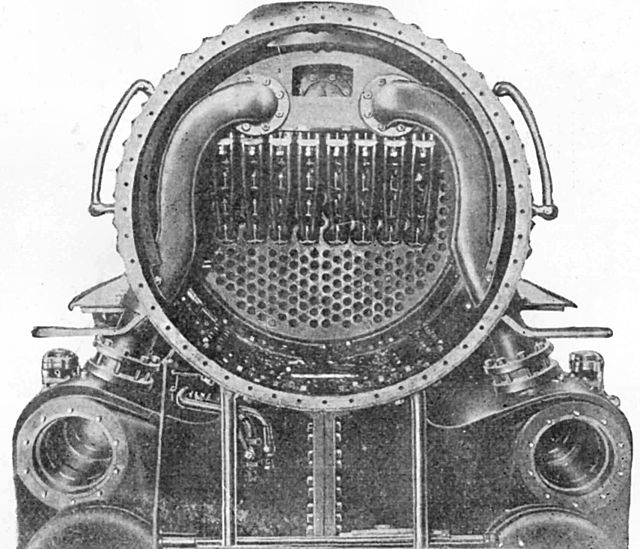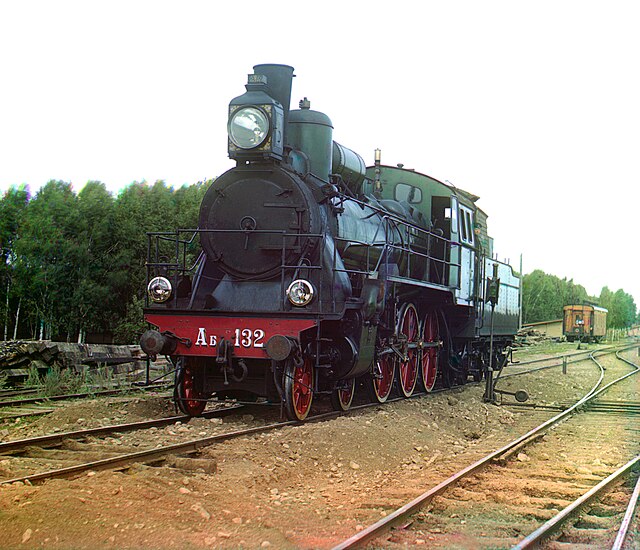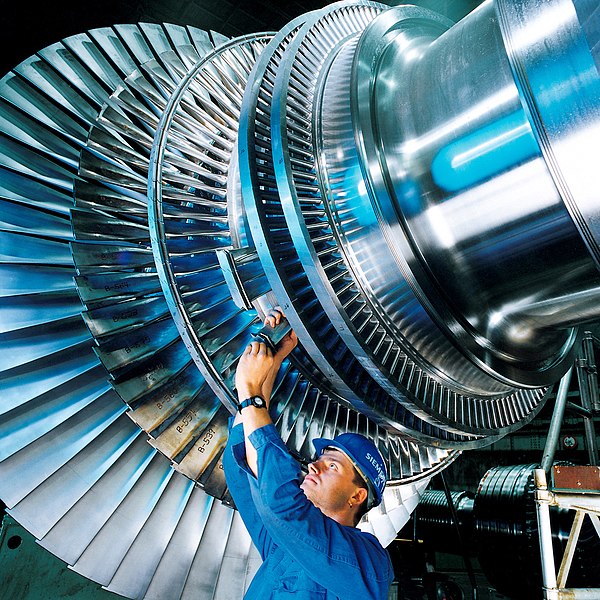A superheater is a device used to convert saturated steam or wet steam into superheated steam or dry steam. Superheated steam is used in steam turbines for electricity generation, in some steam engines, and in processes such as steam reforming. There are three types of superheaters: radiant, convection, and separately fired. A superheater can vary in size from a few tens of feet to several hundred feet.
General arrangement of a superheater installation in a steam locomotive.
Superheater viewed from the smokebox. Top centre is the superheater header, with pipes leading to cylinders. Tubes below feed steam into and out of the superheater elements within the flues. The stack and the damper have been removed for clarity.
Early color photograph from Russia taken by Sergey Prokudin-Gorsky in 1910 of steam locomotive with a superheater
A steam turbine is a machine that extracts thermal energy from pressurized steam and uses it to do mechanical work on a rotating output shaft. Its modern manifestation was invented by Charles Parsons in 1884. Fabrication of a modern steam turbine involves advanced metalwork to form high-grade steel alloys into precision parts using technologies that first became available in the 20th century; continued advances in durability and efficiency of steam turbines remains central to the energy economics of the 21st century.
The rotor of a modern steam turbine used in a power plant
A 250 kW industrial steam turbine from 1910 (right) directly linked to a generator (left)
The first steam turbine-powered ship Turbinia: fastest in the world at that time
A steam turbine without its top cover







